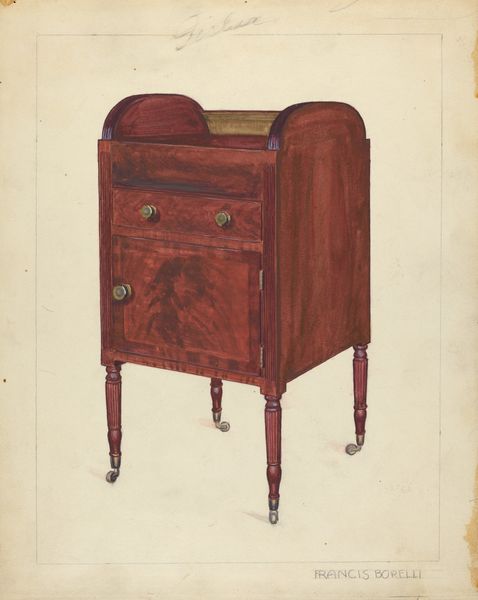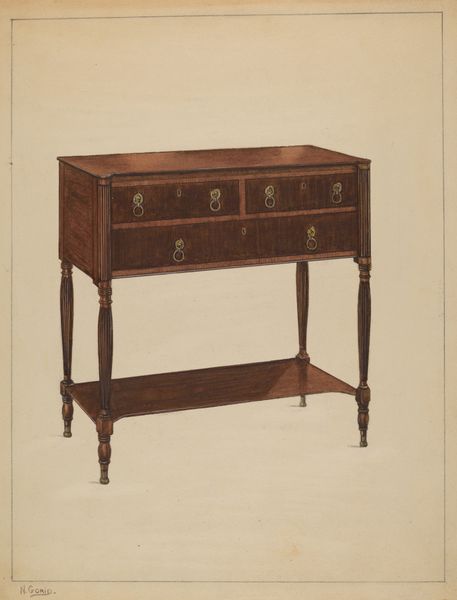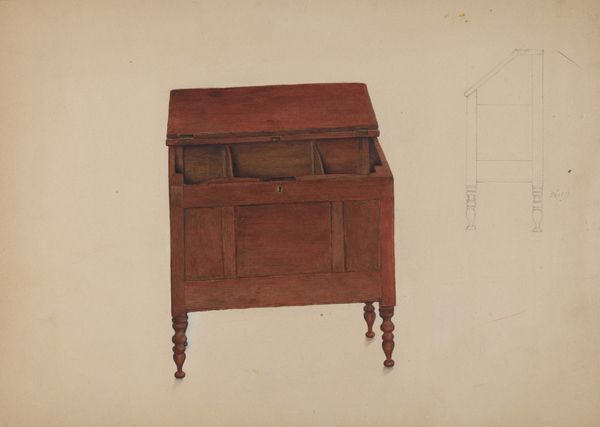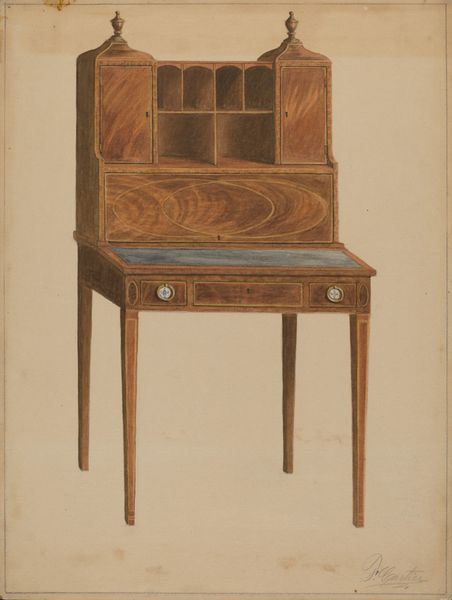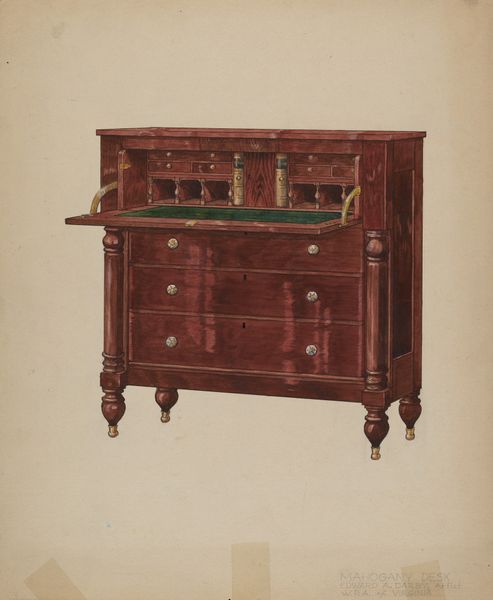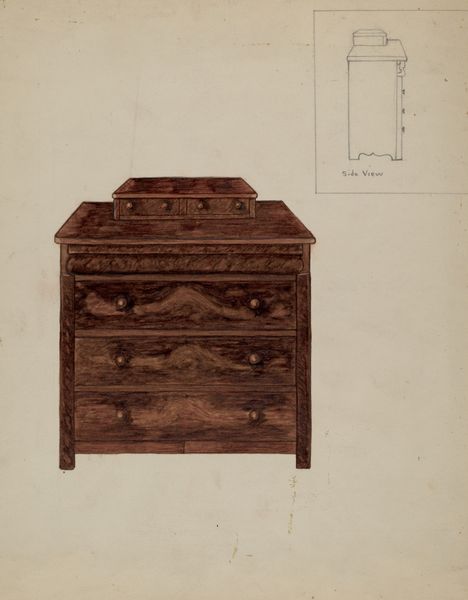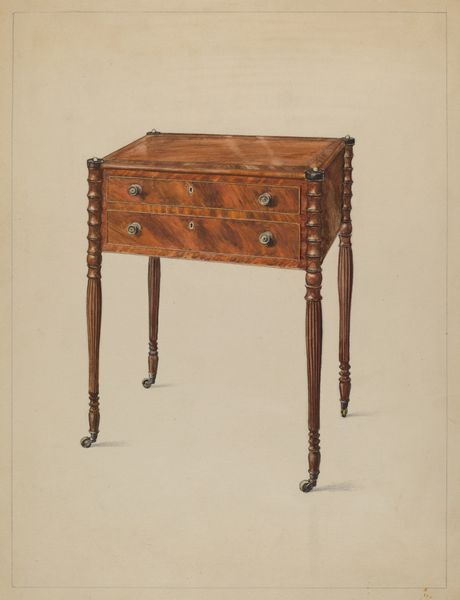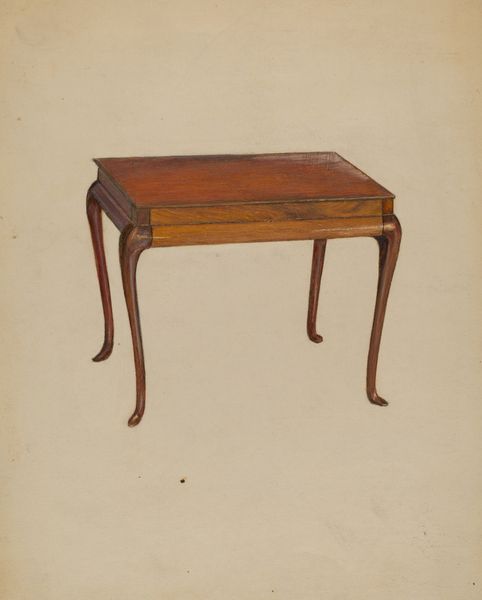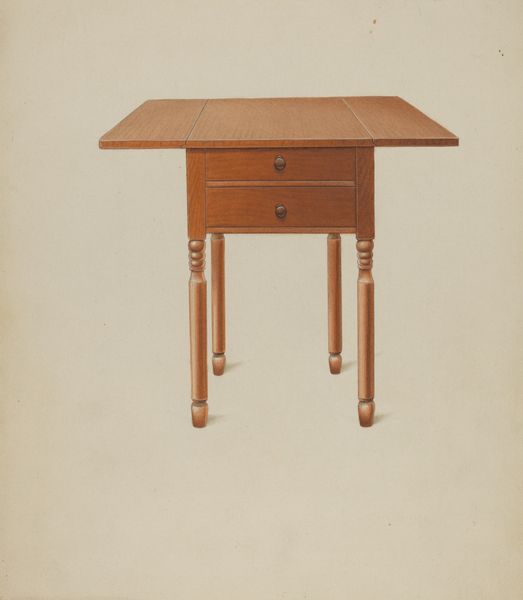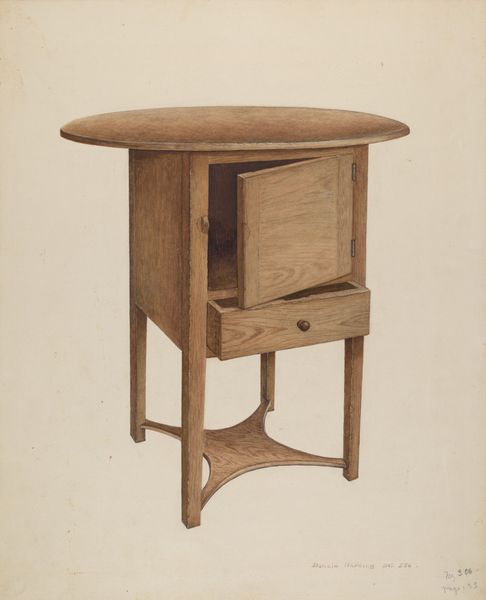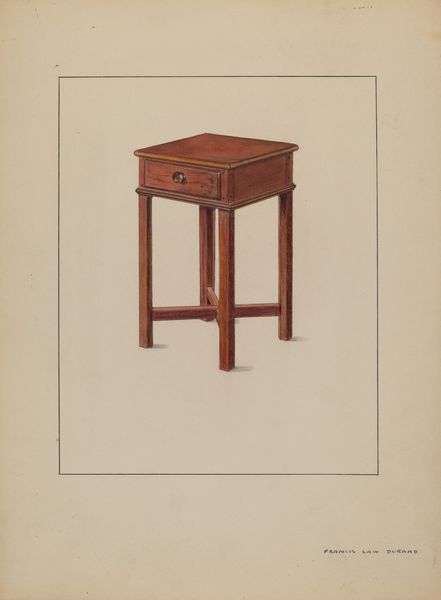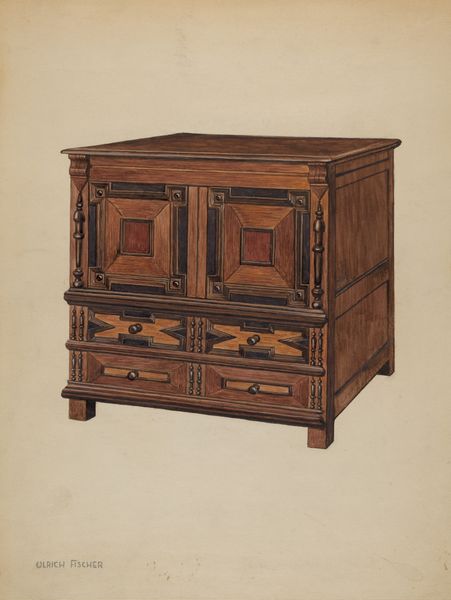
drawing, watercolor
#
art-deco
#
drawing
#
water colours
#
watercolor
#
decorative-art
#
watercolor
Dimensions: overall (approximate): 27.9 x 23.3 cm (11 x 9 3/16 in.) Original IAD Object: 16 1/4"x22 1/4"x30
Copyright: National Gallery of Art: CC0 1.0
Curator: I find the quiet elegance of Edna C. Rex's watercolor drawing, "Lady's Companion," from about 1937, immediately striking. What are your initial impressions? Editor: There's an almost clinical precision to the rendering of this small wooden table. The color palette is constrained, but within that limitation, I appreciate the artist’s modulation of tone and shade. It evokes a sense of domestic intimacy and order, don't you think? Curator: Absolutely. For me, the piece opens a window into the intersection of gender, design, and domesticity in the interwar period. We see the role of women, potentially the artist herself, in shaping and defining the material culture of their homes. This simple table embodies not just functional utility but a cultivated aesthetic that speaks volumes about social status and personal expression within the confines of expected roles. Editor: I'm more interested in the piece as a study in form. The artist presents this design with an unusual amount of depth through perspective and attention to edges and details. Notice, for example, how the drawer pulls offer small geometric counterpoints to the straight edges. And these various sketches offer an array of additional angles and structural observations. Curator: And those additional sketches speak to the labor involved in creation, don’t they? There’s the visible representation of boxes open and closed, reflecting potentially the access or lack thereof to material comforts. It's impossible to divorce that artistic choice from considering the broader societal frameworks that were impacting women at the time, the limitations of both access and expected roles. Editor: I see the separate sketchings not as elements rooted in the broader political sphere, but as variations on the original. There's something quite pleasing about its structure; for instance, observe how the composition balances horizontal and vertical elements in a visually stable way. Curator: I concede the piece displays formal cohesion, but its power truly lies in prompting discussion regarding class, design, and identity and considering these intersecting threads woven into this single furnishing rendered on paper. Editor: Perhaps in appreciating Rex's watercolor "Lady's Companion" we recognize, as you noted, domestic and societal themes. But also, we can examine how design translates across different mediums and modes of visual thinking.
Comments
No comments
Be the first to comment and join the conversation on the ultimate creative platform.
